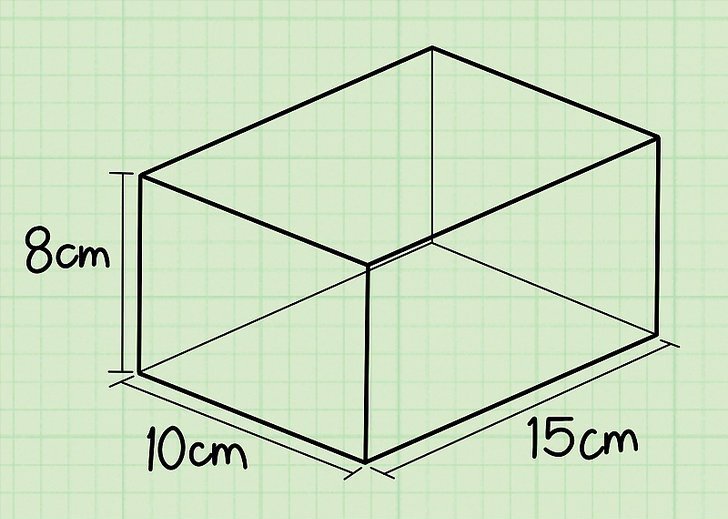輸送やロジスティクスを扱う企業経営者にとって、CBM(立方メートル)を理解することは非常に重要である。送料は商品の体積に基づいて計算されることが多く、計算を誤ると多額の過払いが発生する可能性がある。幸いなことに、計算式を知っていればCBMの計算は簡単です。
In this guide, we'll walk through the exact formula for calculating CBM, practical examples, and the importance of CBM in different shipping scenarios, such as sea freight and air freight. We’ll also discuss common conversion issues, as well as tools and calculators that can make the process easier.
CBMとは何か?
立方メートル(CBM) is the volume of a package, container, or shipment. It's calculated by multiplying the dimensions of the package (Length x Width x Height) in meters. CBM is often used in shipping to determine how much space a package will occupy, and it's one of the main factors that influence shipping costs.
CBM is important because shipping companies typically charge either by weight or by volume. If your shipment is light but takes up a lot of space, you will be charged based on the CBM. On the other hand, if your shipment is heavy but doesn't take up much space, the weight might be the determining factor for the cost. Knowing how to calculate CBM accurately ensures you aren't overcharged for shipping services.
経営者にとってCBMが重要な理由
商品の定期的な出荷を扱う企業、特に国際貿易に携わる企業にとって、CBMの計算は極めて重要な作業です。誤った容積測定のために船積み料金を過大に支払うと利益率が低下し、CBMを過小評価すると出荷が拒否されたり遅れたりする可能性があります。
In addition, many shipping companies set volume limits on their containers and shipments. For example, sea containers have a limited volume capacity, and exceeding this limit could mean splitting the shipment into multiple containers, leading to additional costs. Knowing your shipment's exact CBM helps you optimize how goods are packed and transported.
では、CBMを計算するための手順を探ってみよう。
CBMの計算式は?
CBMの計算式は簡単である:
CBM=長さ×幅×高さ
However, the key lies in ensuring that all the dimensions are measured in meters. If you're measuring your shipment dimensions in centimeters or inches, you'll need to convert them into meters before calculating the CBM.
例えば、長さ2メートル、幅1メートル、高さ1.5メートルのパッケージがあるとします。そのCBMを計算する:
cbm=2×1×1.5=3 cbm
センチメートルやインチといった小さな寸法で作業している場合は、ここで計算式を調整します:
- 単位:センチメートル(cm):寸法(長さ×幅×高さ)を掛け、その結果を1,000,000で割ってCBMに換算する:長さ150cm、幅100cm、高さ200cmの箱:

- インチ:寸法(長さ×幅×高さ)にインチを掛け、その結果を61,024で割ってCBMに換算する:例:長さ60インチ、幅40インチ、高さ80インチのパッケージ:

国際配送の場合、地域によって寸法が異なる場合があるため、これらの換算は重要です。
CBMを見つけるには?
CBMを求めるのは、荷物の長さ、幅、高さを掛けるだけと簡単です。しかし、現実のシナリオでは、大きさの異なる複数の荷物や、不規則な形状の品物が含まれることがよくあります。そのような場合は、個々の品目ごとにCBMを計算し、それらを合計して総貨物量を求める必要があります。
例えば、以下の寸法の箱を3つ発送する場合:
- ボックス 1:長さ1.5メートル、幅1メートル、高さ2メートル
- ボックス 2長さ2メートル、幅1メートル、高さ1.5メートル
- ボックス 3:長さ1メートル、幅1.5メートル、高さ1.2メートル
各ボックスのCBMを計算する:
- ボックス1:1.5 x 1 x 2 = 3 CBM
- ボックス2:2×1×1.5=3CBM
- ボックス3:1 x 1.5 x 1.2 = 1.8 CBM
CBMの合計はこうなる:
3+3+1.8=7.8 cbm
これはお荷物が占める総容積で、送料を決定するために使用される値です。
1CBMは何箱ですか?
1CBMに収まる箱の数は、箱の大きさによって異なる。箱が小さければ、より多くの箱が1CBMに収まるが、箱が大きければ、より多くのスペースを取ることになる。
例えば、一辺が50cm(0.5m)の箱があれば、1箱の体積は次のようになる:
CBM=0.5×0.5×0.5=0.125CBM/箱
1CBMに何個の箱が入るかを調べる:

つまり、1CBMにこの箱を8個入れることができる。
この情報は、大量に商品を出荷する企業にとって特に有用で、より良い梱包とコンテナの最適化を可能にし、最終的に輸送コストを削減する。
40フィートコンテナには何CBM入っていますか?
海運業でよくある質問のひとつに、標準的な輸送用コンテナに何個のCBMが入るかというものがある。40フィートコンテナの内寸は、長さ約12.03メートル、幅約2.35メートル、高さ約2.38メートルです。この寸法を使用すると、40フィートコンテナの総容積は次のようになります:
12.03×2.35×2.38=67.25 cbm
However, not all of this space is usable. Depending on how the goods are packed and whether or not they can be stacked, the usable volume is usually between 54 and 58 CBM. It's important to keep in mind that different types of goods, especially irregularly shaped items or items that require careful handling, may occupy more space and reduce the actual CBM that can be used.
小口貨物の場合、企業は20フィートコンテナを使用することが多く、このコンテナの容量は約33.1CBMで、使用可能な容積は約25~28CBMである。
海上輸送のCBMの計算方法は?
Sea shipment is one of the primary ways that businesses transport goods internationally, and CBM is the key factor in determining shipping rates. Whether you're shipping full containers or less-than-container loads (LCL), calculating CBM ensures that you are billed accurately.
海上輸送の場合は、同じCBMの計算式に従う:
CBM=長さ(m)×幅(m)×高さ(m)
各パッケージの長さ、幅、高さをメートル単位で測定し、各アイテムの CBM を計算する。すべての荷物の CBM を合計して総容積を求める。
For example, if you're shipping three cartons with the following dimensions:
- カートン1:1.5メートル×1メートル×2メートル
- カートン2:2メートル×1メートル×1.5メートル
- カートン3:1メートル×1.5メートル×1.2メートル
各カートンのCBMを計算する:
- カートン1: 1.5 x 1 x 2 = 3 CBM
- カートン2: 2 x 1 x 1.5 = 3 CBM
- カートン 3: 1 x 1.5 x 1.2 = 1.8 CBM
合計CBM = 3 + 3 + 1.8 = 7.8 CBM。
海上運賃1CBM対kg
海上運賃は、貨物の容積(CBM)または重量に基づいて決定される。一般的に、1CBMは167kgの重量に相当します。つまり、お荷物の重量が1CBMあたり167kgより軽い場合は、CBMに基づいて送料が計算されます。それよりも重い場合、送料は重量に基づいて計算されます。
例えば、荷物が2CBMを占め、重量が300kgの場合、重量に基づいて請求される可能性が高い(2CBM×167kg=334kgであり、実際の重量300kgよりも多いため)。しかし、荷物の重量が400kgであれば、料金は重量に基づくことになる。
概要
出荷や物流を頻繁に扱う企業経営者にとって、CBMを理解し計算することは不可欠である。 信頼醸成措置 は、輸送コスト、コンテナスペース、梱包の決定に直接影響する出荷量を決定するのに役立ちます。正しい計算式に従い、CBM計算機のようなシンプルなツールを使用することで、出荷プロセスを最適化し、過剰な支払いを避け、商品を効率的に輸送することができます。
次回の出荷準備の際には、正確な寸法を測り、CBMを計算し、最良の運賃を確保するために配送業者に相談することを忘れないでください。CBMを正確に計算することで、時間と費用の両方を節約し、ビジネスを円滑に進めることができます。






